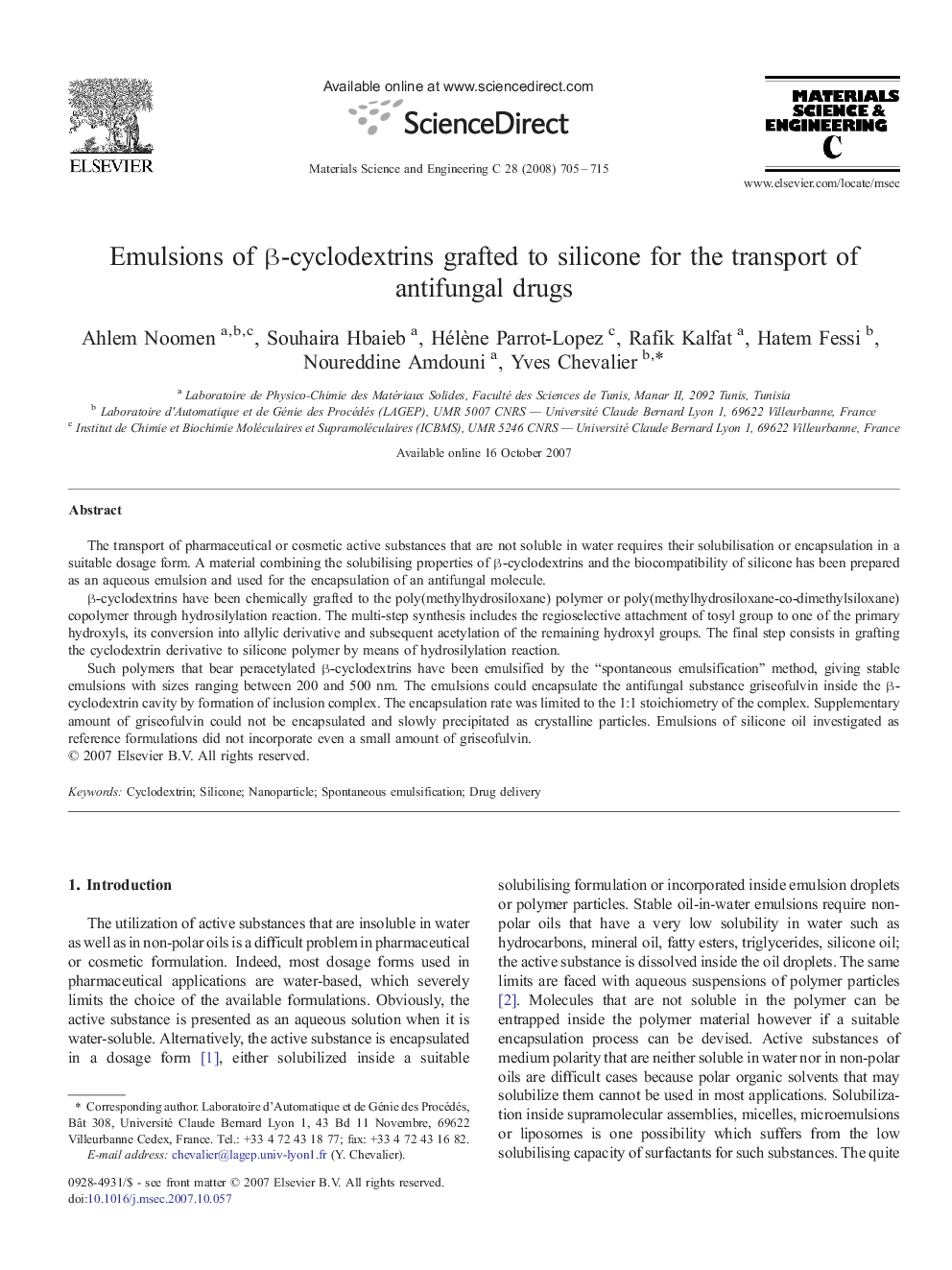| Article ID | Journal | Published Year | Pages | File Type |
|---|---|---|---|---|
| 1431071 | Materials Science and Engineering: C | 2008 | 11 Pages |
The transport of pharmaceutical or cosmetic active substances that are not soluble in water requires their solubilisation or encapsulation in a suitable dosage form. A material combining the solubilising properties of β-cyclodextrins and the biocompatibility of silicone has been prepared as an aqueous emulsion and used for the encapsulation of an antifungal molecule.β-cyclodextrins have been chemically grafted to the poly(methylhydrosiloxane) polymer or poly(methylhydrosiloxane-co-dimethylsiloxane) copolymer through hydrosilylation reaction. The multi-step synthesis includes the regioselective attachment of tosyl group to one of the primary hydroxyls, its conversion into allylic derivative and subsequent acetylation of the remaining hydroxyl groups. The final step consists in grafting the cyclodextrin derivative to silicone polymer by means of hydrosilylation reaction.Such polymers that bear peracetylated β-cyclodextrins have been emulsified by the “spontaneous emulsification” method, giving stable emulsions with sizes ranging between 200 and 500 nm. The emulsions could encapsulate the antifungal substance griseofulvin inside the β-cyclodextrin cavity by formation of inclusion complex. The encapsulation rate was limited to the 1:1 stoichiometry of the complex. Supplementary amount of griseofulvin could not be encapsulated and slowly precipitated as crystalline particles. Emulsions of silicone oil investigated as reference formulations did not incorporate even a small amount of griseofulvin.
